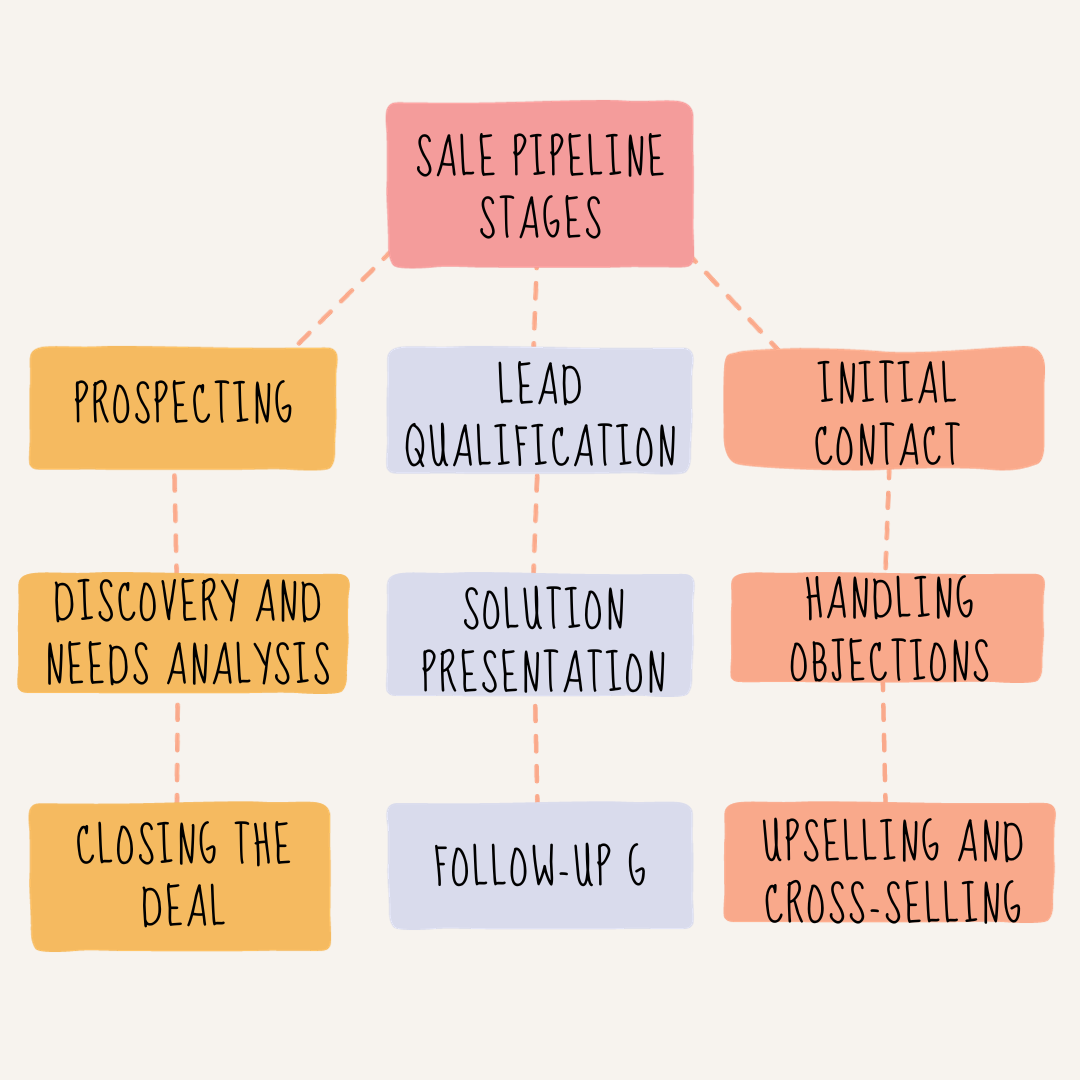Any sales-driven organisation’s lifeblood is its sales pipeline. It’s a strategic framework for tracking potential clients as they move from awareness to purchase. Sales pipeline management is critical for increasing revenue and ensuring a smooth sales process.
This post will cover all you need to know about sales pipelines, from their stages to management advice.
Definition: What Is A Sales Pipeline?
A sales pipeline is a tangible depiction of your sales process that is divided into stages that transfer leads from lead creation through deal closure. There are benchmarks and activities required to progress a lead to the subsequent phase at each level, assisting salespeople in identifying where each potential deal is and what has to be done to close it.
While sales pipeline stages and activities vary per company, all sales pipelines may be divided into three basic categories:
Lead Generation: All of the operations required to locate and qualify leads as prospects are included in this section of your sales funnel. Qualification is typically accomplished through a discovery call in which salesmen examine money, authority, needs, and timeline. Those who fulfil this criterion are labelled as prospects and are sent to the lead nurturing stage of your pipeline.
Lead Nurturing: This section of your pipeline represents all of the stages and activities necessary to nurture prospects and convert them into opportunities to acquire your product or service. A sales presentation before the company’s buying committee could be one of the nurturing activities.
Deal Closing: When a prospect is satisfied with your offer, they progress to the final stage of your sales pipeline, when you send out a contract and close the deal. More nurturing may be required in this case. However, the majority of the actions associated with this portion of your pipeline usually revolve around negotiating the actual offer.
Check Out The Sales Pipeline Stages
A sales pipeline depicts the stages that a potential customer goes through during the sales process. It assists sales teams in tracking and managing interactions with leads and prospects.
The particular stages of a sales pipeline might vary depending on the organisation and industry, but here are some common stages that you may encounter in a normal sales pipeline:
- Prospecting: It is the initial stage in which sales representatives identify possible leads or prospects. To discover potential consumers, they may utilise numerous approaches, such as cold phoning, email marketing, social media participation, or visiting trade exhibitions and events.
- Lead Qualification: At this step, the sales team assesses leads to see if they meet particular criteria that qualify them for the company’s products or services. Budget, need, authority, and timeline (sometimes known as BANT criteria) are examples of qualification criteria.
- Initial Contact: The sales rep makes the first contact with the prospect after qualifying the lead. This could be done via phone, email, or other means of communication. The purpose is to introduce the company and begin the process of creating a partnership.
- Discovery and Needs Analysis: During this stage, the sales rep speaks with the prospect to learn about their individual needs, pain spots, and issues. This allows you to personalise the sales strategy and solution to the prospect’s specific needs.
- Solution Presentation: After obtaining information about the prospect’s needs, the sales representative delivers a customised solution that explains how the company’s products or services may answer those needs and add value.
- Handling Objections: Prospects frequently express objections or worries. At this point, the sales representative addresses these issues and gives further information or clarity as needed to alleviate the prospect’s concerns.
- Closing The Deal: This is the stage in which the sales representative works to complete the sale. Negotiating terms, discussing pricing, and ensuring that the prospect is ready to commit to a purchase are all examples of this.
- Follow-Up And Nurturing: Even after the sale is completed, it is critical to maintain the client relationship. Following up is making sure the consumer is satisfied with the goods or service and addressing any post-sale complaints.
- Upselling And Cross-Selling: Once a customer has signed on, the sales team may find chances to upsell or cross-sell other products or services that complement what the customer already has.
How Do You Create A Sales Pipeline?
It is critical to have a sales pipeline that is tailored to your individual sales procedures. To begin, sketch out your sales process. Then, define critical stages in the process and the activities required to take leads and prospects through each level. Then, with a sales pipeline tool, tangibly design your pipeline, set up reporting, and refine your pipeline based on the reporting metrics.
Describe Your Sales Process
Your sales process is a series of stages that convert a cold lead into a paying customer. When developing your sales pipeline, start by outlining your sales process and the actions required to convert a lead into a prospect or customer. The actions of your sales process will determine the stages of your sales pipeline.
Identify Critical Sales Pipeline Stages
Determine the essential sales pipeline steps you must monitor in order to convert an unqualified lead into a paying customer. Common sales pipelines feature five to ten pipeline stages that divide your sales process into lead generation, lead nurturing, and deal closing.
